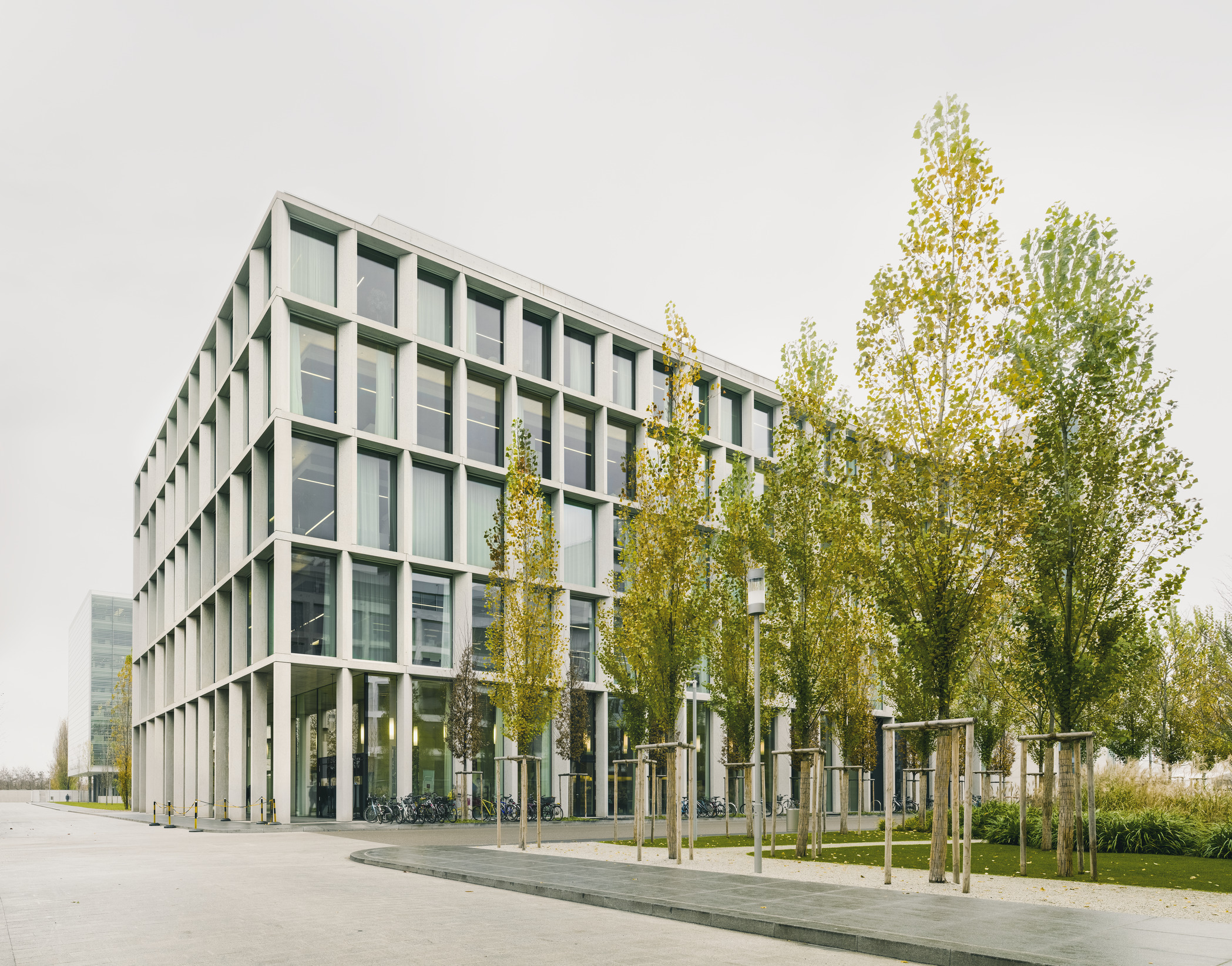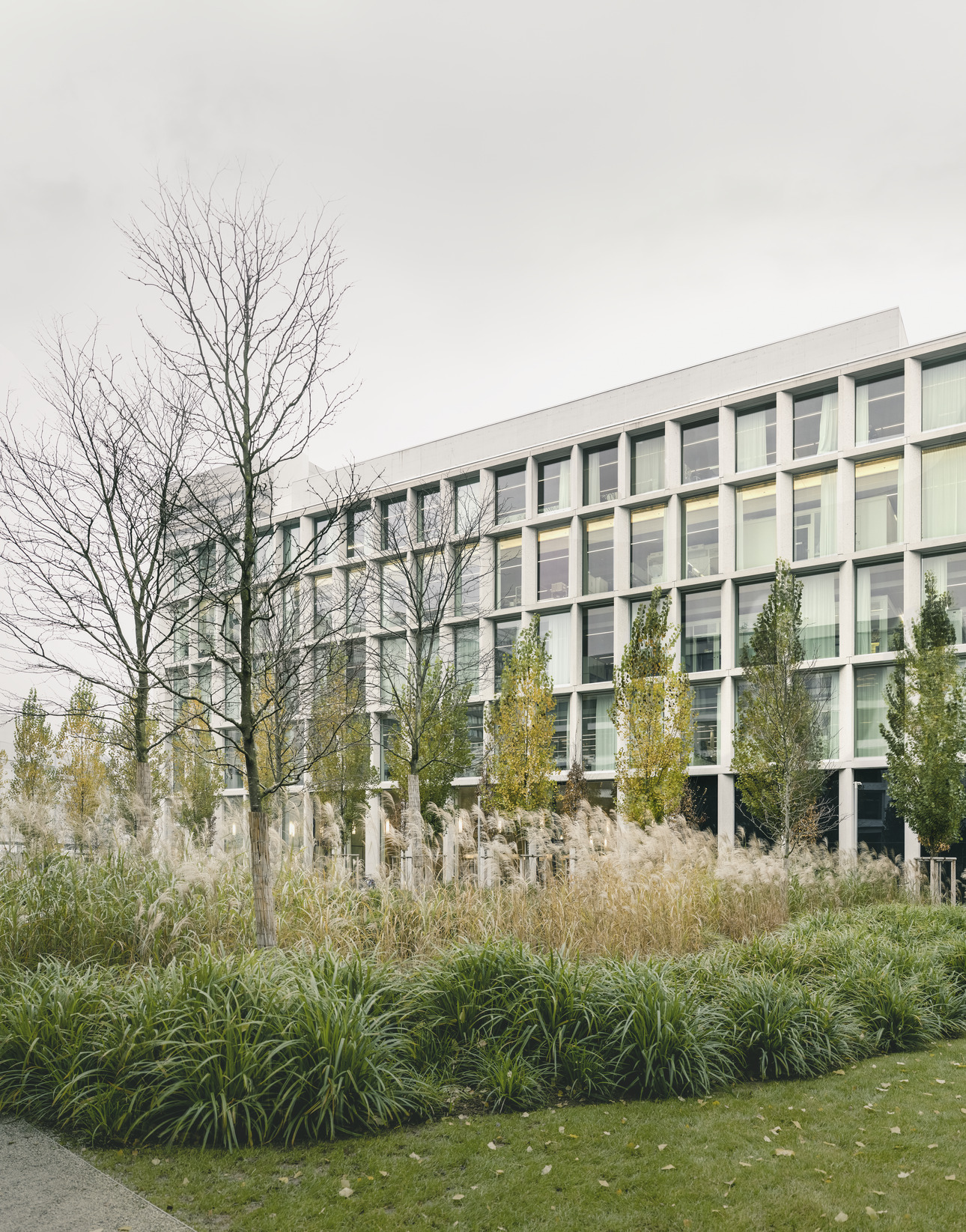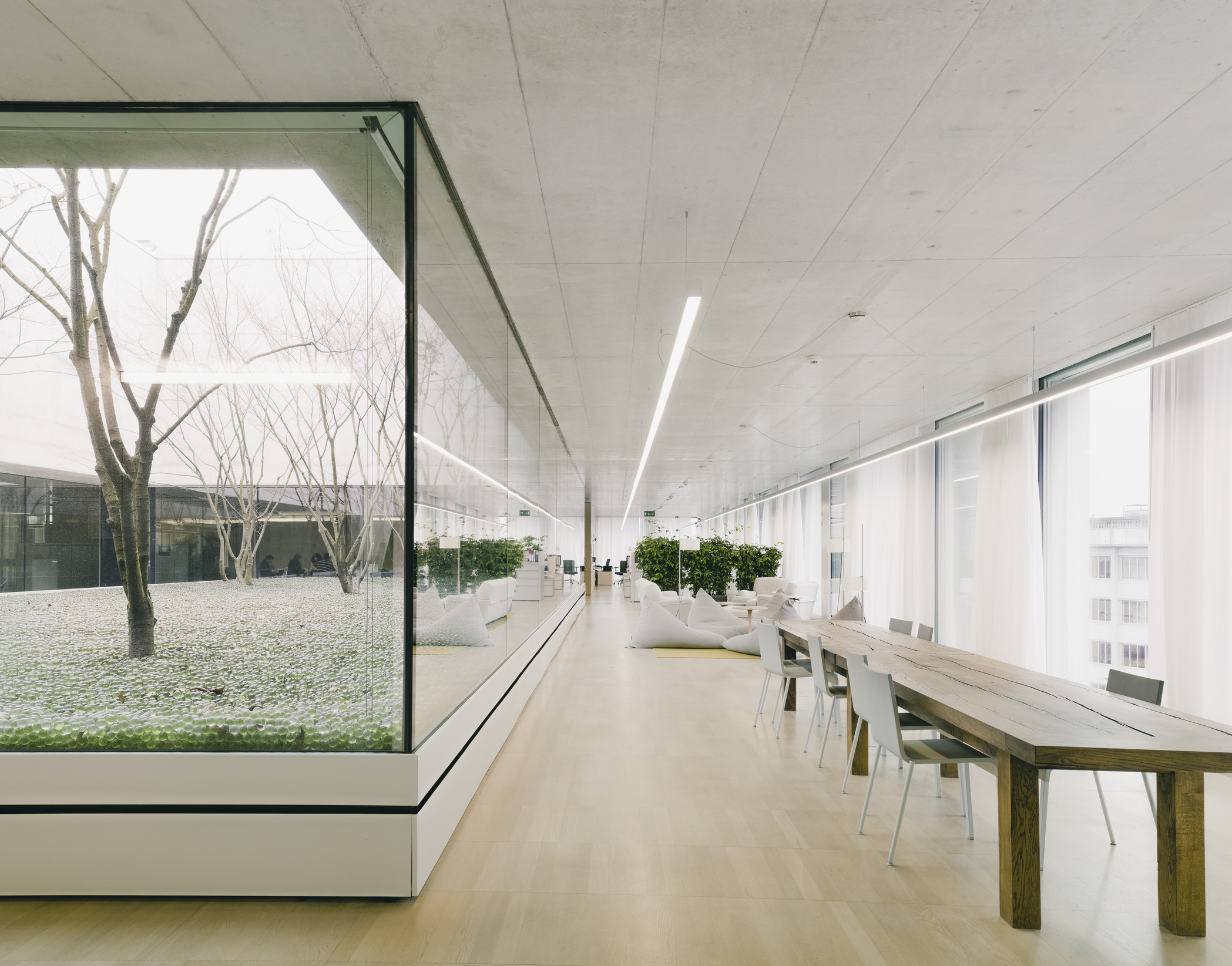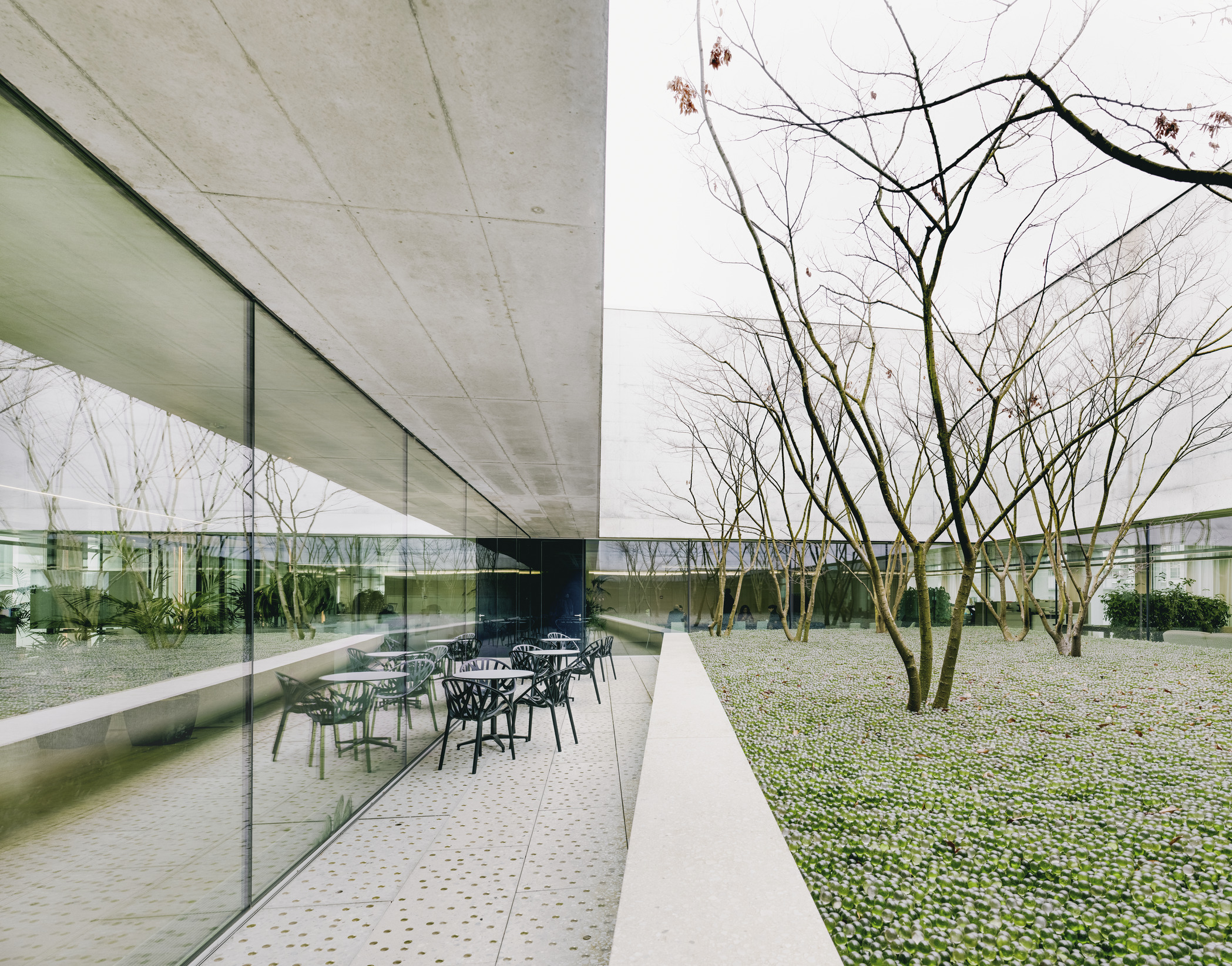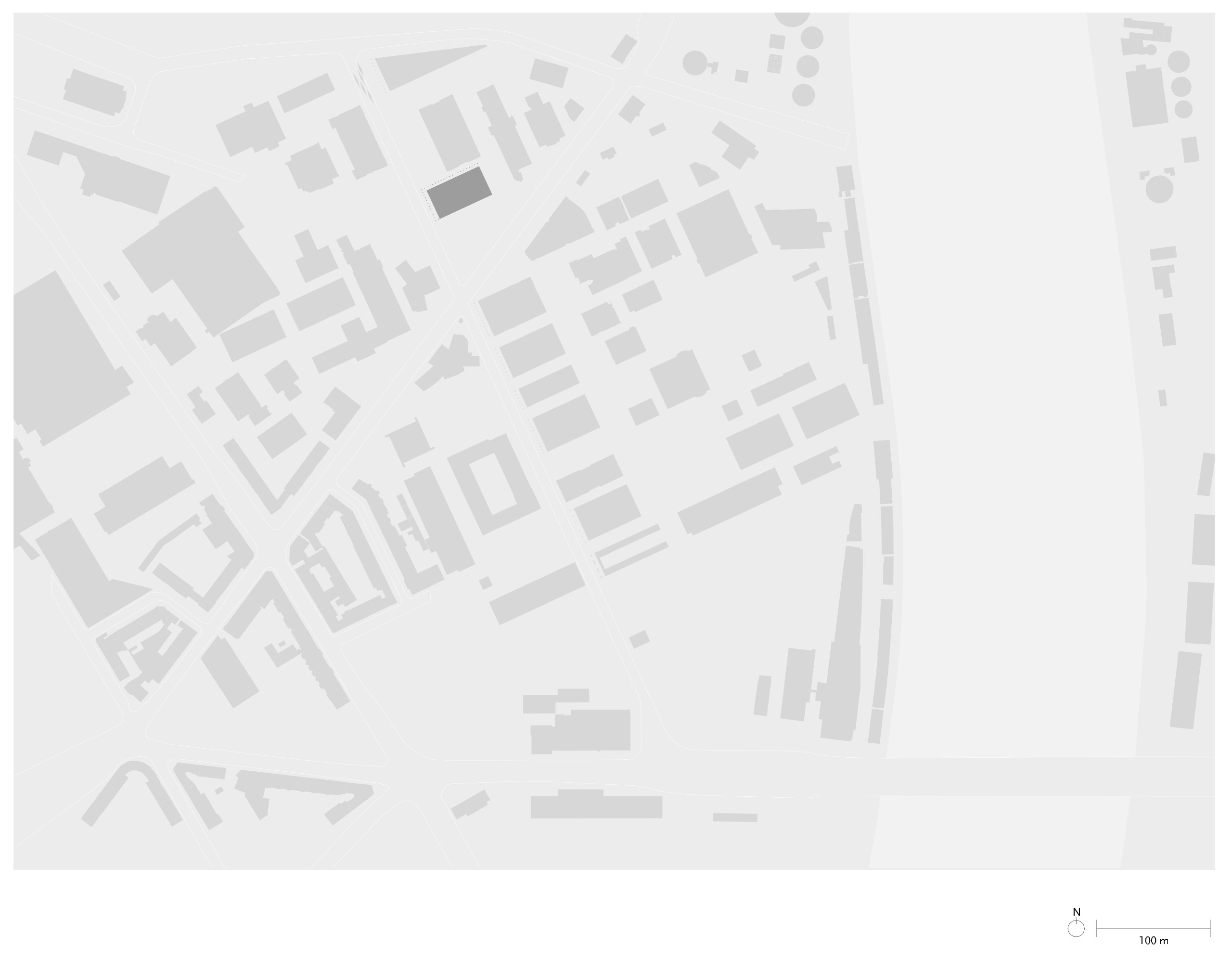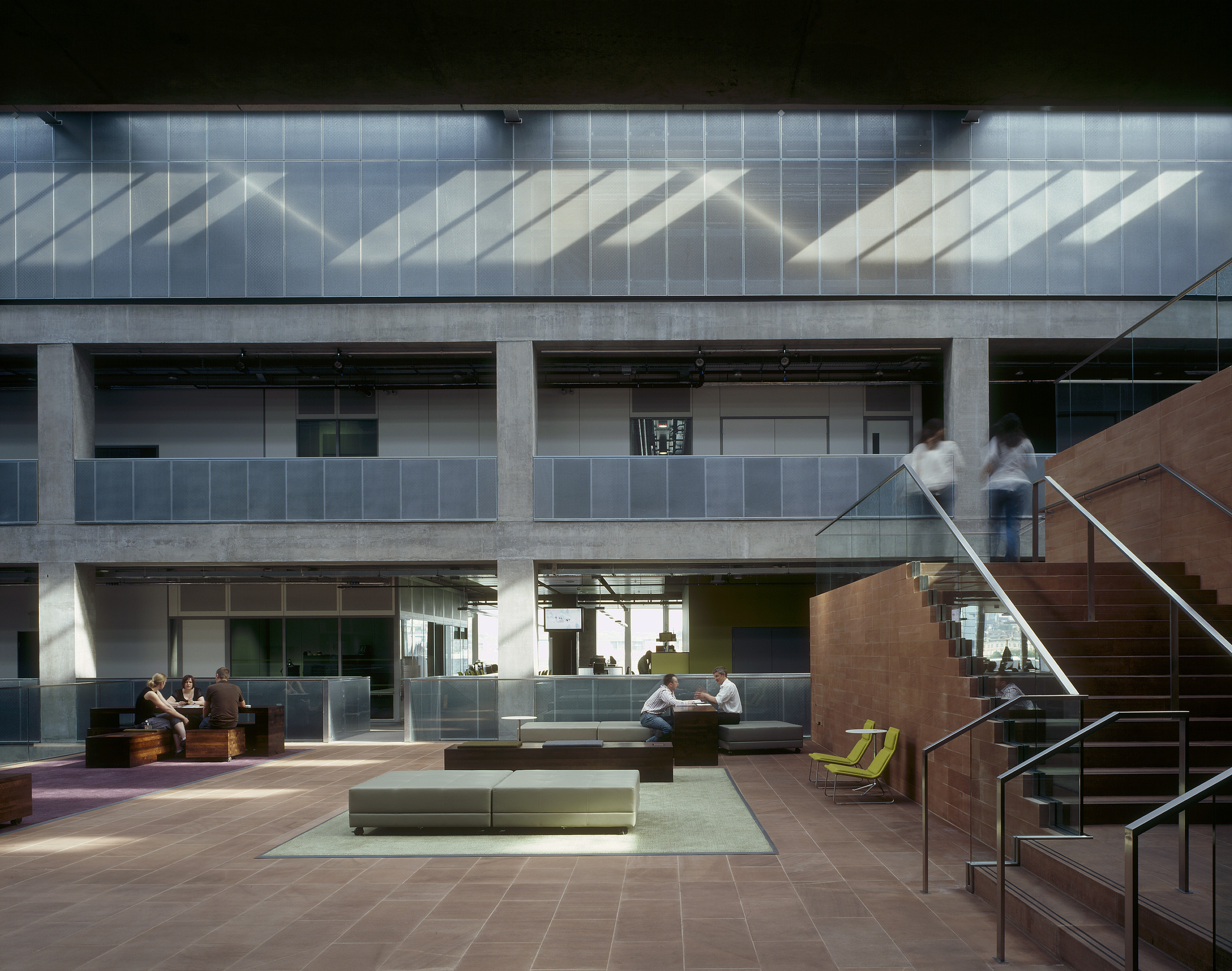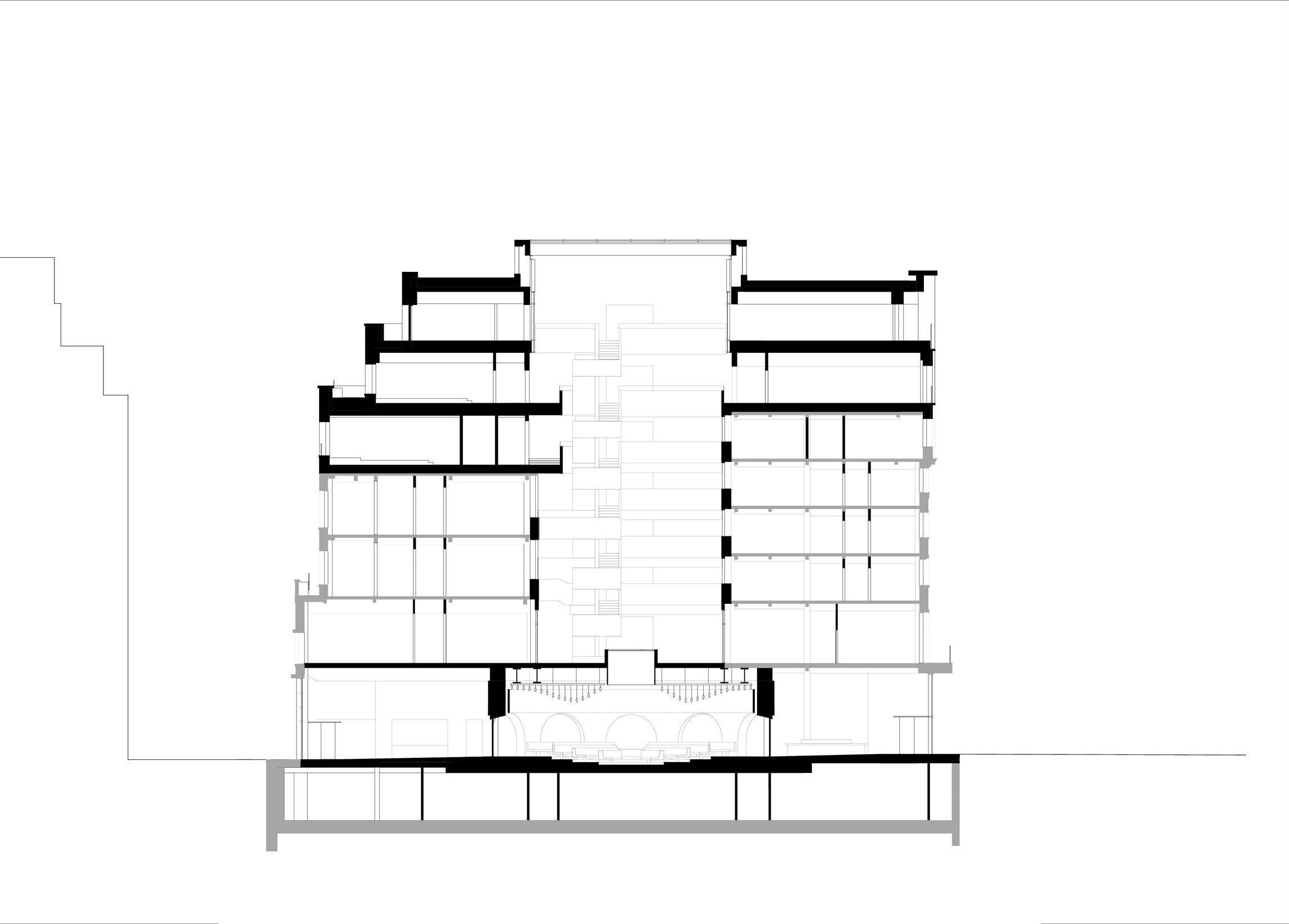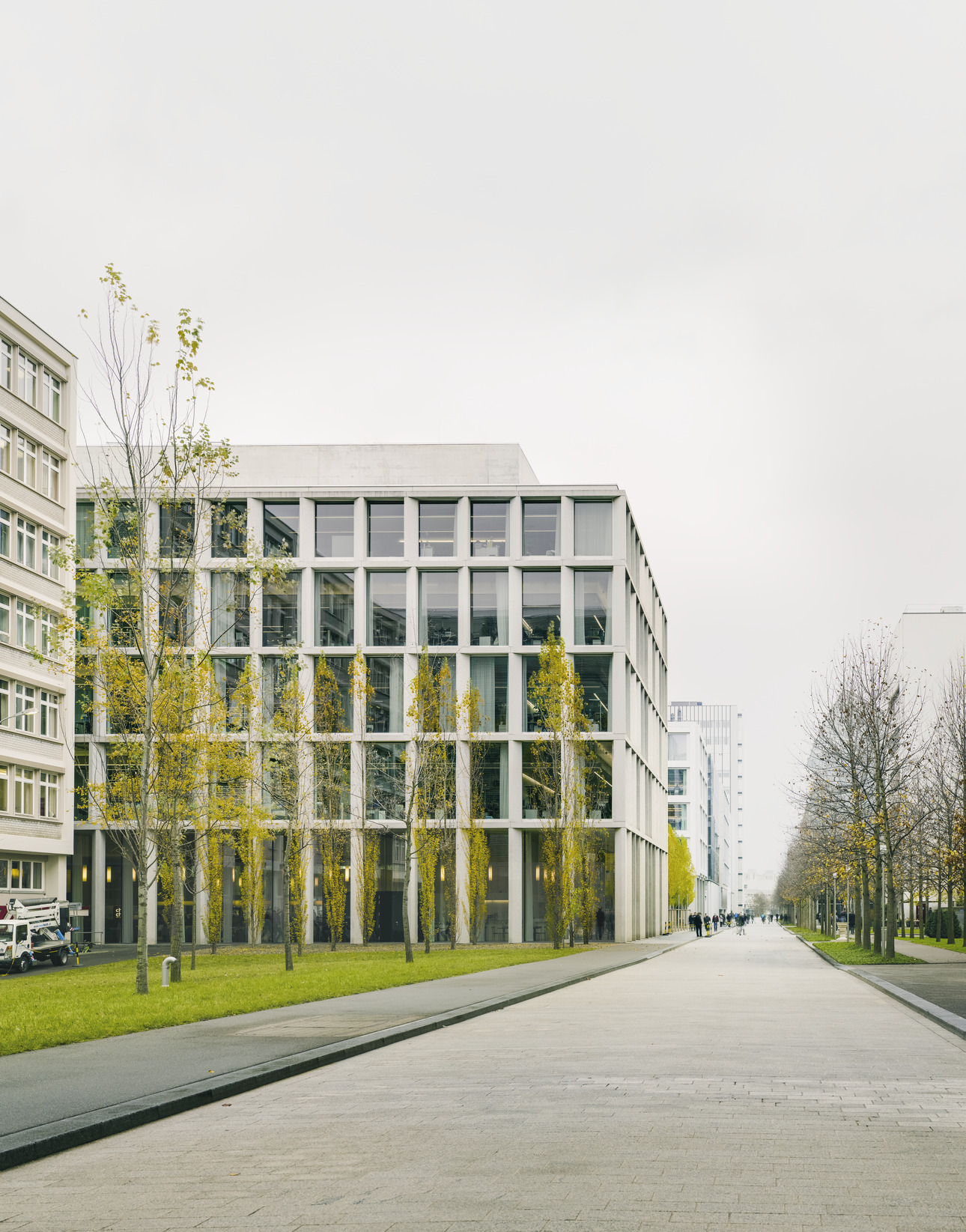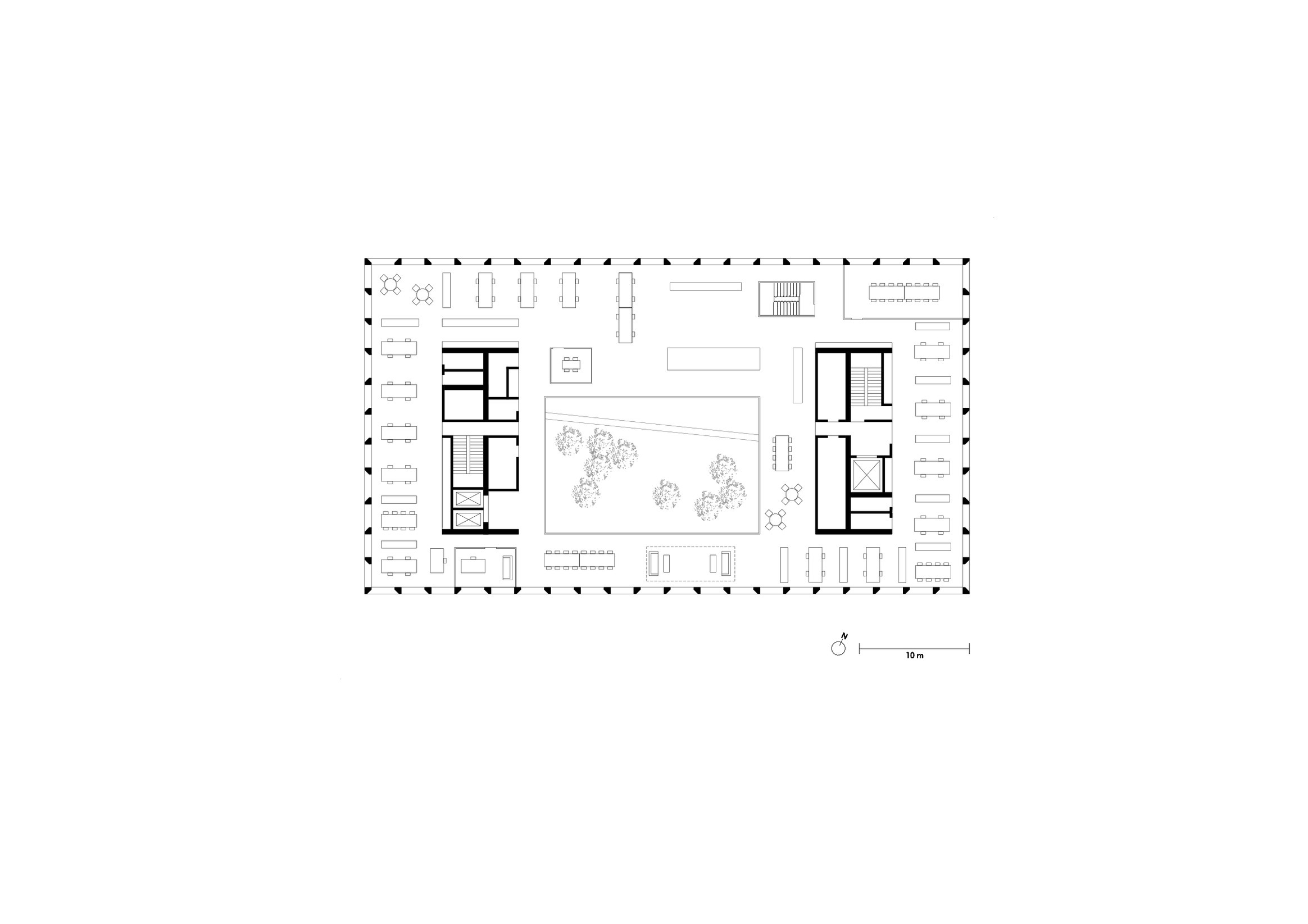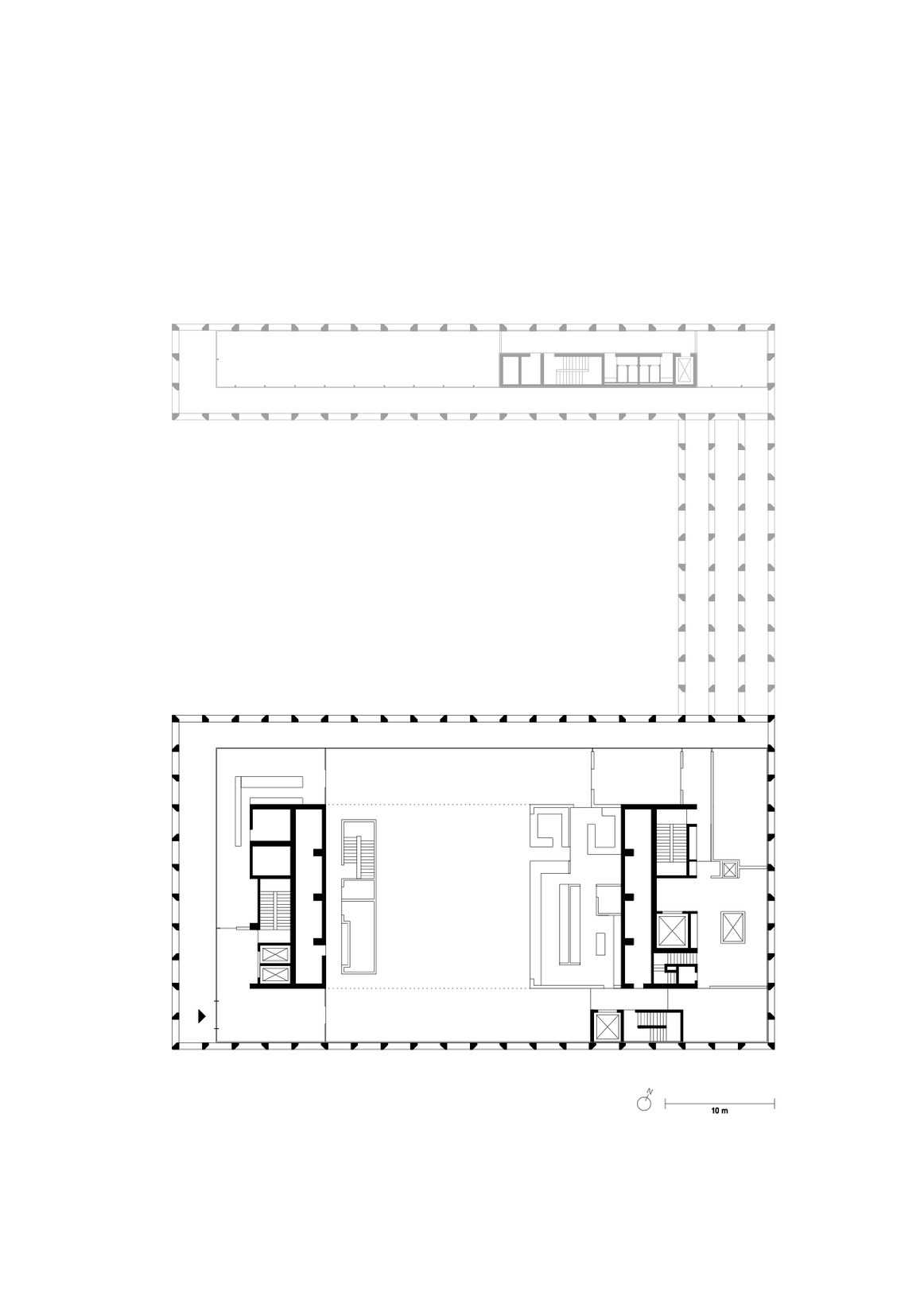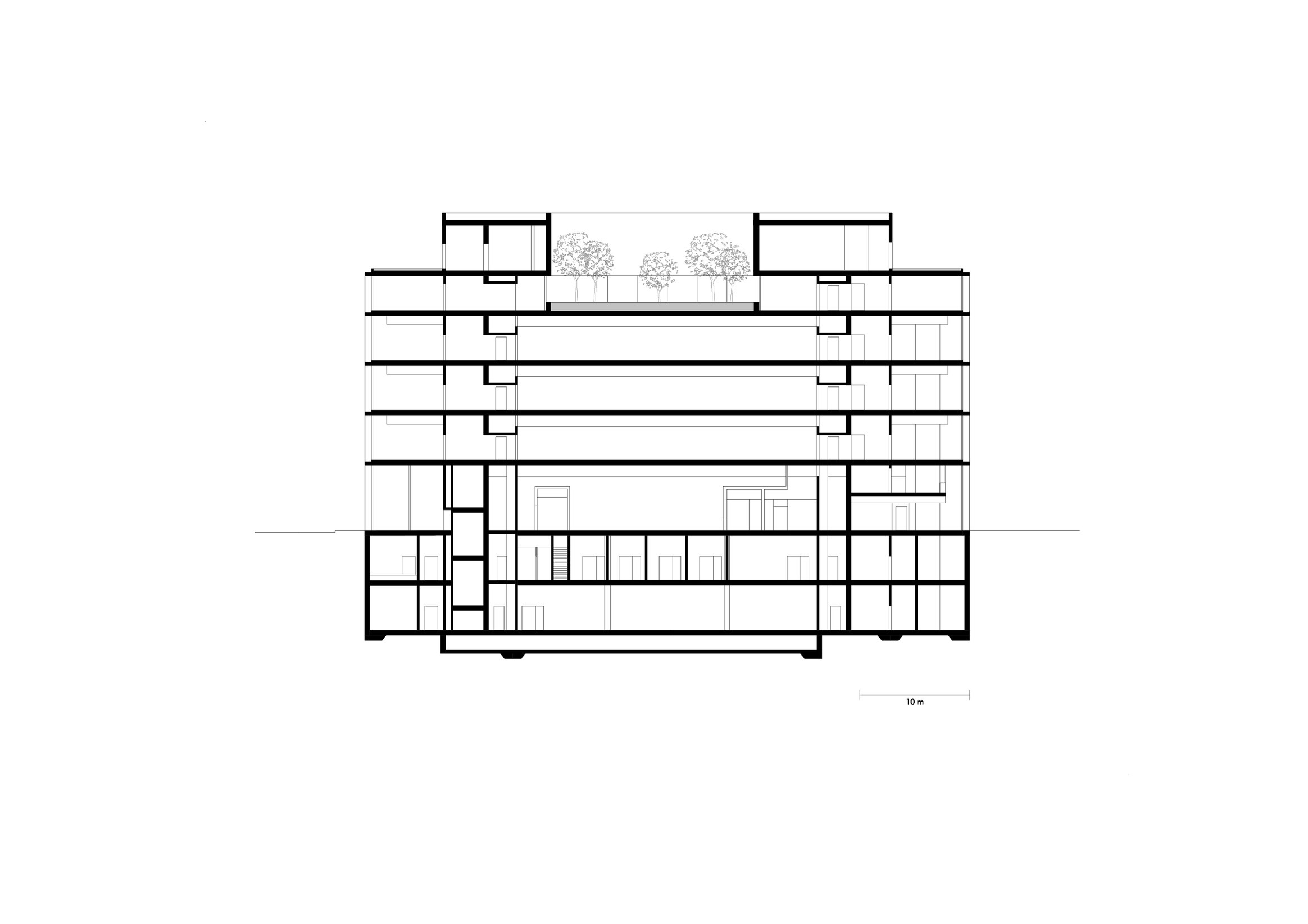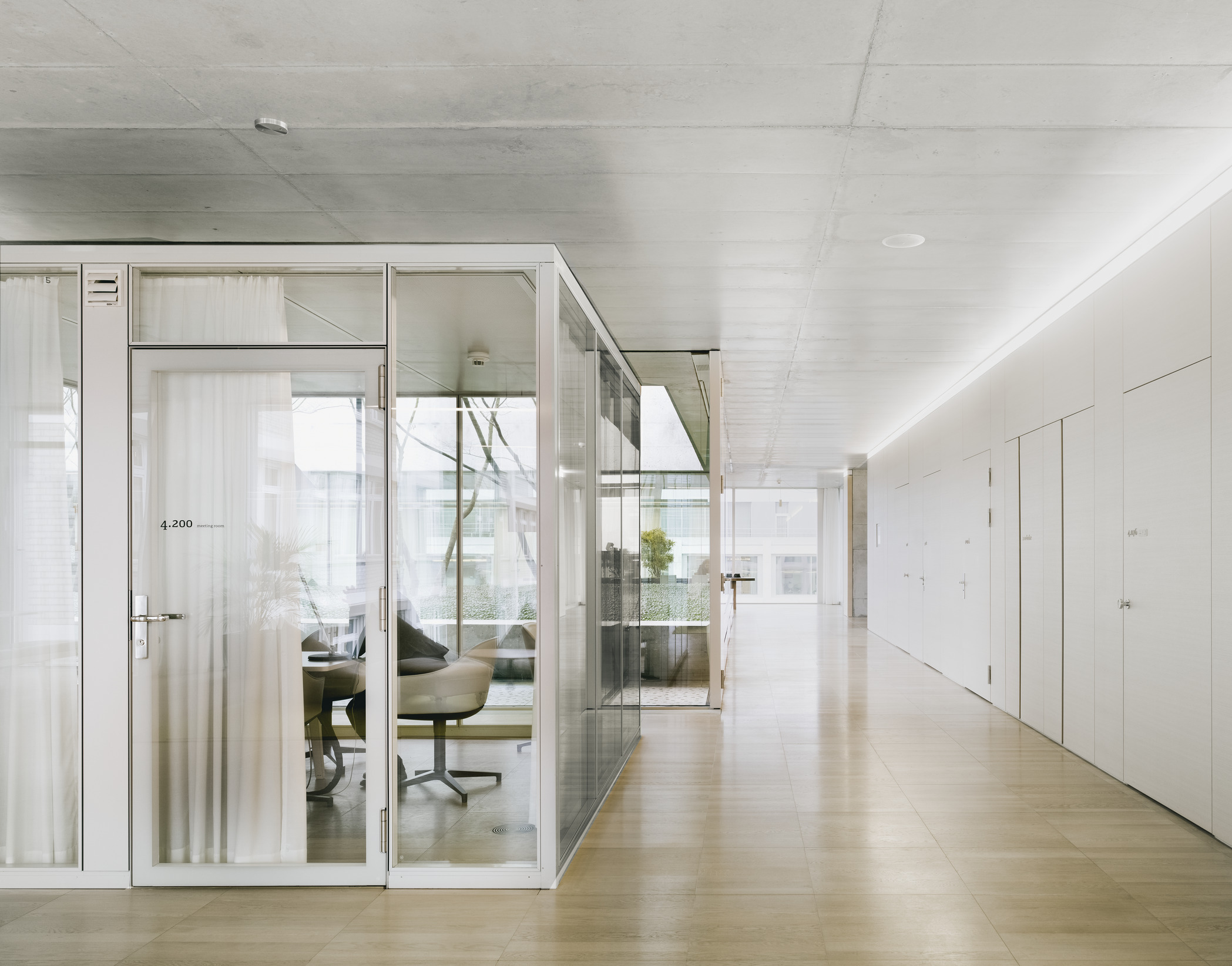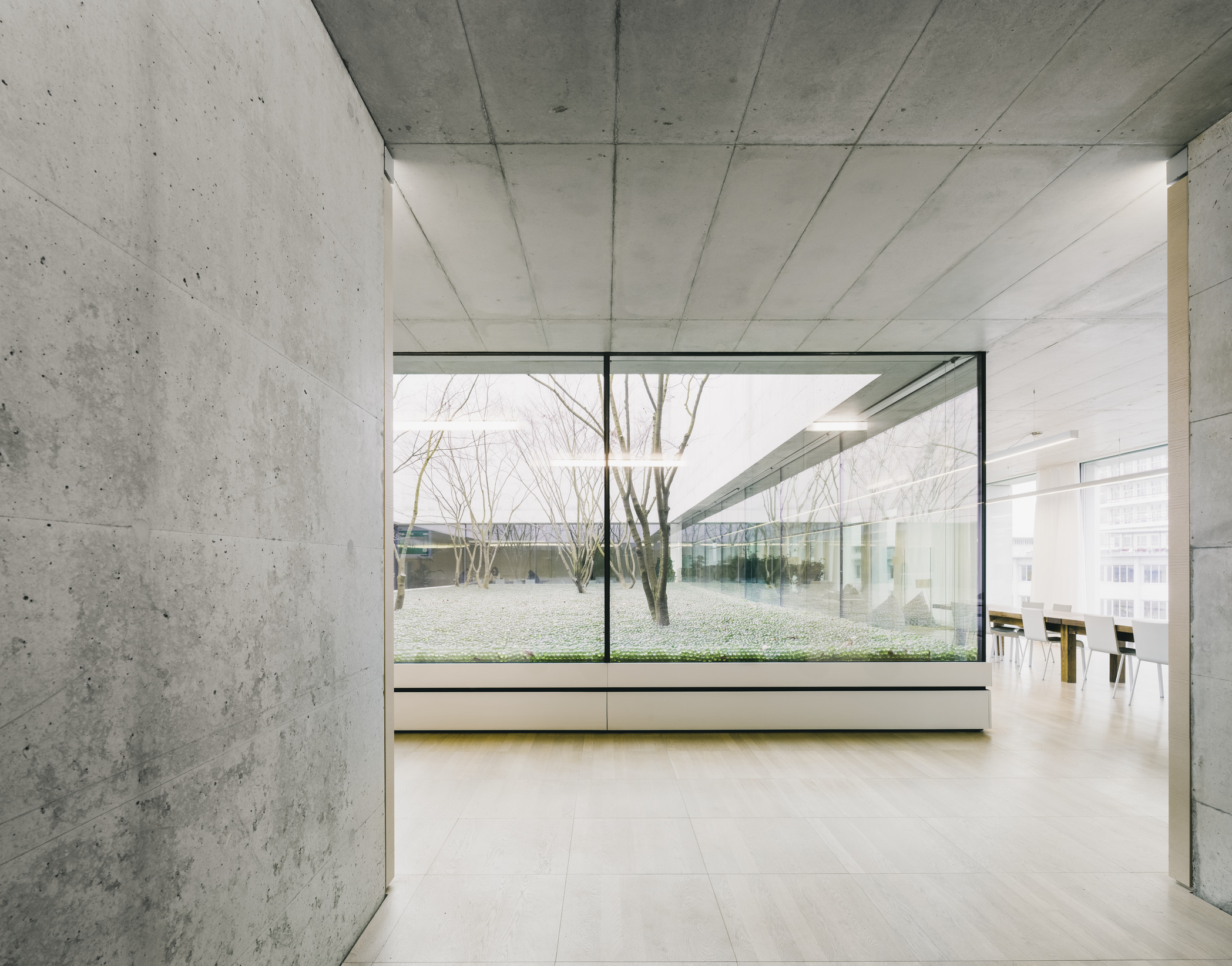Novartis laboratory building
Basel, Switzerland
2006–10
The research and production site in Basel for the pharmaceutical company Novartis has been transformed and extended into a new campus. The masterplan for the area, situated between the River Rhine and the French border, was developed by the architect Vittorio Magnago Lampugnani. The overall project comprises office buildings as well as research and production facilities, all designed by different architects.
This project consists of a five-storey laboratory building located on Fabrikstraße, the principal artery of the new campus. The building commands a central position on the intersection with a new east-west axis leading towards the Rhine. The footprint of the building, its overall building height and the height of the ground floor were fixed within the masterplan. Envisioned as a laboratory of the future, the building had to take into consideration flexibility for shared and temporary workspaces and fluid transitions between areas for experimentation and regular workspaces.
The façade, the two building cores and concrete beams provide the supporting structure. The beams span twenty-seven metres and contain technical services, allowing for a column-free floor plan. This spatial configuration offers flexibility within which new laboratory concepts may be explored. The external structure is made of precast concrete with faceted columns. The concept adopts the theme of the colonnade, a recurrent motif on the campus. The faceting varies between smooth and rough finishes, and its orientation causes differing shadows. Continuous floor-height glazing placed within this external grid provides ample daylight for all the workspaces.
Data and credits
- Project start
- 2006
- Construction start
- 2007
- Completion
- 2010
- Gross floor area
- 11,600m2
- Client
- Novartis Pharma AG
- Architect
- David Chipperfield Architects Berlin
- Partners
- David Chipperfield, Harald Müller, Alexander Schwarz (Design lead)
- Project architect
- Christian Helfrich (Preparation and brief to Technical design,
Site design supervision),
Robert Westphal (Technical design, Site design supervision) - Project team
- Markus Bauer, Wolfgang Baumeister, Lena Ehringhaus, Niccolo Genesio, Gesche Gerber, Ulrich Hannen, Paul Hillerkus, Nicolas Kulemeyer, Astrid Kühn, Sebastian von Oppen, Asa Awad Osman, Martina Pongratz, Stefanie Schleipen, Gunda Schulz
- Executive architect
- Burckhardt + Partner AG, Basel
- Landscape architect
- Wirtz International nv, Schoten
- General contractor
- OTB AG, Basel
Eurolabors AG, Kassel - Structural engineer
- WaltGalmarini AG, Zurich
- Services engineer
- Fact GmbH, Böblingen
gb consult AG, Basel - Building physics
- Gruner AG, Basel
- Fire consultant
- Schweizerisches Institut zur Förderung der Sicherheit, Zurich
- Lighting consultant
- matí AG Lichtgestaltung, Adliswil
- Laboratory consultant
- Dr. Heinekamp Labor- und Institutsplanung, Basel
- Façade consultant
- gkp Fassadentechnik AG, Aadorf
- Design laboratory stair
- Ross Lovegrove, London
- Signage
- Mifflin-Schmid Design, Zurich
- Artwork
- Serge Spitzer, Molecular (BASEL), 2002 – 2008
- Photography
- Simon Menges
- Selected Awards
- RIBA International Prize 2011
AIA UK Chapter Excellence in Design Award 2012
